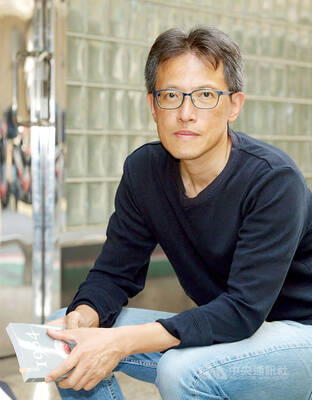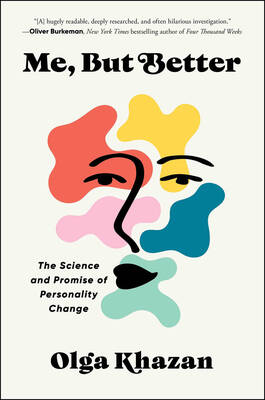A routine deep sea diving mission in the North Sea goes terribly wrong when a young diver is stranded some 300 feet below the surface in the new film Last Breath, currently in theaters. His umbilical cable has severed. The support vessel above is aimlessly drifting away from the site through violent, stormy waters. And the diver has only 10 minutes of oxygen in his backup tank.
As if that wasn’t enough, it’s also a true story.
If merely reading this is giving you heart palpitations already, you can only imagine the white-knuckle experience of watching this all play out on the big screen. It’s 40ish minutes of pure suspense and anxiety as the story shuffles between the man at the bottom of the ocean, Chris Lemons (Finn Cole), his fellow saturation divers (Woody Harrelson as Duncan and Simu Liu as Dave) in the diving bell below the waters who are unable to help and the crew in the support vessel above (including Cliff Cutris and Mark Bonnar) scrambling to get their systems back online and operational as the clock rapidly runs out. Ten minutes has never felt so short — and then it just gets worse as the clock starts counting up, showing Chris’s time without oxygen.

Photo: AP
At one point, Liu’s character Dave, a no-nonsense, all-business diver says matter-of-factly that it’s a body recovery, not a rescue. Deep sea saturation diving is a dangerous business, described at the start of the film as the most dangerous job on earth. Chris tells his fiance, in a short introduction, that it’s no more dangerous than going to space. She replies that it’s funny that he thinks that is comforting.
The real incident happened in September 2012 — Dave, Duncan and Chris were just one team of divers sent to the ocean floor off the coast of Aberdeen, Scotland, to repair an oil pipeline.
The seas were particularly rough that day, with winds up to 35-knots, common for the North Sea but also not what one might call safe. Chris and Dave were in the middle of their work when they heard the urgent calls to abort: The dynamic positioning system in the support vessel above had failed and they were in drift.
Chris scrambled to maneuver out of the pipeline corridors, but his umbilical got caught. For a brief, awful moment he’s the anchor to the ship above, but soon enough the cord snapped, and he was thrown back to the ocean floor in pitch black with no coms, no heat and very little hope for survival. News articles about the incident clock his backup oxygen supply as being closer to five or six minutes — perhaps the movie wanted to give the audience a little buffer.
If this sounds at all familiar, it may be because it was made into a documentary, also called Last Breath and released in 2019. While it was well-received, some true stories are just too gripping to exist solely in that form. It’s not exactly a surprise that a narrative film was made as well. There’s a good track record of recent complimentary adaptations — think Ron Howard’s 13 Lives and The Rescue about the Thai boys soccer team stuck in the cave.
This one was made by Alex Parkinson, the same director who co-directed the doc, and it’s a well-executed narrative interpretation that doesn’t get in its own way with padding. Harrelson gets to be the wise mentor who really doesn’t want to lose someone on his last mission. Liu gets to flex his action muscles (literally and figuratively) in a modest but solid role. And they don’t go out of their way to shoehorn in a villian — this is just a group of people trying their best to save a life.
The only real problem, if one can even call it that, is that it’s so short. The film doesn’t take liberties with stretching out the timeline much at all and after 93 minutes, the whole thing is over. It feels strange to want a movie to be longer, but in the case of Last Breath I was both desperate for it to end, for anxiety reasons, and also wanting more.

Last week, the the National Immigration Agency (NIA) told the legislature that more than 10,000 naturalized Taiwanese citizens from the People’s Republic of China (PRC) risked having their citizenship revoked if they failed to provide proof that they had renounced their Chinese household registration within the next three months. Renunciation is required under the Act Governing Relations Between the People of the Taiwan Area and the Mainland Area (臺灣地區與大陸地區人民關係條例), as amended in 2004, though it was only a legal requirement after 2000. Prior to that, it had been only an administrative requirement since the Nationality Act (國籍法) was established in

Three big changes have transformed the landscape of Taiwan’s local patronage factions: Increasing Democratic Progressive Party (DPP) involvement, rising new factions and the Chinese Nationalist Party’s (KMT) significantly weakened control. GREEN FACTIONS It is said that “south of the Zhuoshui River (濁水溪), there is no blue-green divide,” meaning that from Yunlin County south there is no difference between KMT and DPP politicians. This is not always true, but there is more than a grain of truth to it. Traditionally, DPP factions are viewed as national entities, with their primary function to secure plum positions in the party and government. This is not unusual

More than 75 years after the publication of Nineteen Eighty-Four, the Orwellian phrase “Big Brother is watching you” has become so familiar to most of the Taiwanese public that even those who haven’t read the novel recognize it. That phrase has now been given a new look by amateur translator Tsiu Ing-sing (周盈成), who recently completed the first full Taiwanese translation of George Orwell’s dystopian classic. Tsiu — who completed the nearly 160,000-word project in his spare time over four years — said his goal was to “prove it possible” that foreign literature could be rendered in Taiwanese. The translation is part of

The other day, a friend decided to playfully name our individual roles within the group: planner, emotional support, and so on. I was the fault-finder — or, as she put it, “the grumpy teenager” — who points out problems, but doesn’t suggest alternatives. She was only kidding around, but she struck at an insecurity I have: that I’m unacceptably, intolerably negative. My first instinct is to stress-test ideas for potential flaws. This critical tendency serves me well professionally, and feels true to who I am. If I don’t enjoy a film, for example, I don’t swallow my opinion. But I sometimes worry